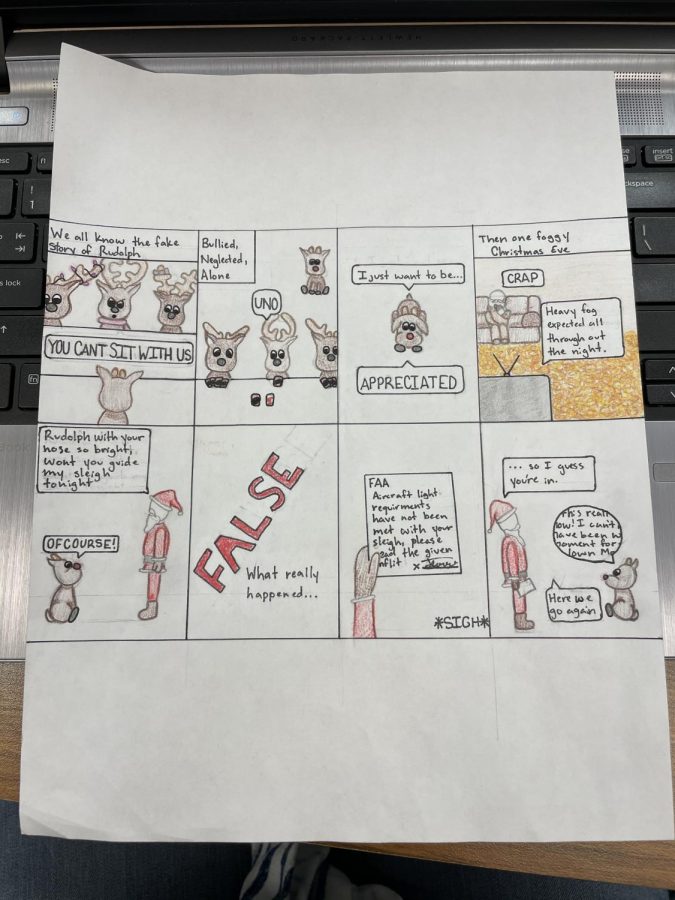Kicking Rudolph out from Santa’s Team
Being a Christmas enthusiast since the day I was born, I was always a firm believer in Santa and his team of flying reindeer. However, over the years, I found that there was one tale I just couldn’t wrap my brain around. No matter how hard I tried, I just couldn’t. It was the tale of Rudolph the Red-Nosed Reindeer. Now, before you are tempted to select another article to read, let me explain why I feel this way. Who knows? By the end, you might feel the same way too!
I was first introduced to the concept of Rudolph’s story through the popular seasonal show on television. After watching it a number of times, I came to the conclusion that Rudolph’s story should not be taught to children. I know, I know. It’s a bit harsh to make a statement that challenges modern Christmas culture and our holiday upbringing. I have to be honest, though. As a child, I never understood the Rudolph craze. I, of course, had a firm belief in Santa and his other reindeer. They were classics! Here are several things that bothered my young mind, and kept me from believing the legend of Rudolph.
First of all, whether one realizes it or not, Rudolph affects our reasoning of Christmas. I mean, I don’t hate the glowing deer, but I’m not a fan of how much he complicates Santa’s logic. I went straight to a well-known source and contacted “Reindeer Express,” Santa’s reindeer team training center located in Washington. Here, tourists can visit the deer while they are training. I asked Sonya Benhardt, one of the owners of this establishment, how she responds when people ask where Rudolph is. She responds by saying “Rudolph is so famous, he hangs out with Santa at the North Pole and only has to work on Christmas Eve.” She even went on to explain that Rudolph works one week for the whole year while the other reindeer work six to eight times longer than him. Why should we teach kids that one of the reindeer is getting special treatment at the North Pole while the others are working hard? This interview broadened my 18-year-old perspective with the injustice at hand, yet the reasoning of my younger-self introduced a different element into the argument while still supporting my point.
First, Little Brittany wondered why on earth we have so much information about Rudolph’s background. The thought of having a full documentary of one reindeer’s life at my disposal seemed suspicious. We didn’t even have a concrete history of Santa Claus’s origin, so why do we have one of a deer’s? It didn’t seem fair. The idea of Santa and his eight reindeer was magical and inviting. The thought of me not knowing where Santa came from and how his reindeer learned to fly created a mystery that lured me in every year. It was exciting. The fact that I knew everything about Rudolph from birth to leading Santa’s sleigh and yet nothing solid about the other reindeer gave him an unfair advantage of winning over the hearts of young and old alike. What about the other reindeer?
Secondly, the show was completely unrealistic to my young mind. Not only did Rudolph have a glowing nose and every reindeer could fly, but all of the reindeer could talk too. I believed that reindeer could fly, but that was the extent of magical traits that I deemed logical. Having too many magical variables in a story tarnished the novelty of Christmas magic itself. Another problem in the film for me was Rudolph’s iconic appearance. Being in a stop-motion movie gave him such an animated presence that envisioning him as a real-life reindeer made me skeptical. Perhaps it is because my introduction to his story was the praise it received for its iconic stop-motion characters and the extremely detailed plot of this individual deer’s life.
But in all seriousness, I don’t think they should teach the underlying values that are found in the story’s plot.
Rudolph teaches that victims of bullying would not be bullied if they were more valuable to society. Okay, I understand that the author of Rudolph was personally bullied as a kid, and that’s part of the reason why he wrote this. It was at a dark point in his life, but there are some values in this story that I don’t support. Rudolph was practically exiled until he came back and proved himself worthy to the others. Once he proved himself, they stopped picking on him and respected Rudolph. Also, we’re completely ignoring the fact that Santa orders the reject-toys onto an isolated island where they sit there forever in misery, wasting away but never dying while they never fulfil what they were made to do. Santa Claus, who is usually the iconic figure for generosity and kindness, threw the toys out because “being unique in appearance and function rendered the toys useless.” Essentially saying that no one would want a toy that was different from the average.
Though some of my reasoning might be a bit rough around the edges, one thing that is undeniable is that we don’t want to teach kids that they have to prove themselves to people who disapprove of them. I mean, is that what we really want to teach impressionable minds? I sure hope it’s not.
For these reasons, I vote to kick out Rudolph from our Christmas traditions.





